Disclaimer
The Dover Public Library website offers public access to a wide range of information, including historical materials that are products of their particular times, and may contain values, language or stereotypes that would now be deemed insensitive, inappropriate or factually inaccurate. However, these records reflect the shared attitudes and values of the community from which they were collected and thus constitute an important social record.
The materials contained in the collection do not represent the opinions of the City of Dover, or the Dover Public Library.
first Parish Church
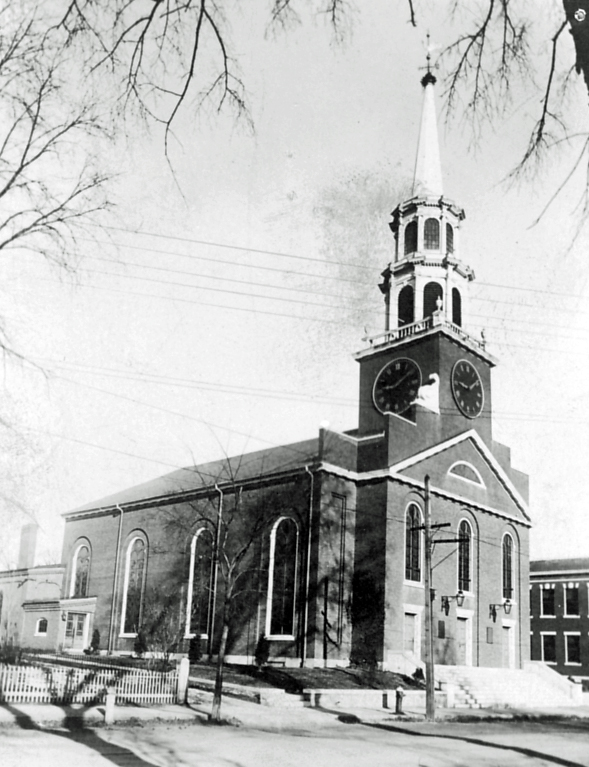
218 Central Avenue
This church is the fifth meetinghouse of the First Parish Congregational Church which is the oldest parish in New Hampshire and one of the oldest in the nation. The parish was founded at Dover Point in 1633 with the first church built five years later in 1638. For years, until its incorporation in 1762 as a separate legal entity, the parish was synonymous with the Town of Dover, and the meetinghouse and courthouse were one. The location of the first church site at Dover Point is unknown. The second site was on the west side of Dover Point Road and was built 1652 -1658. The site is marked with a plaque, and the earthworks thrown up around it in the time of Indian troubles are still evident.
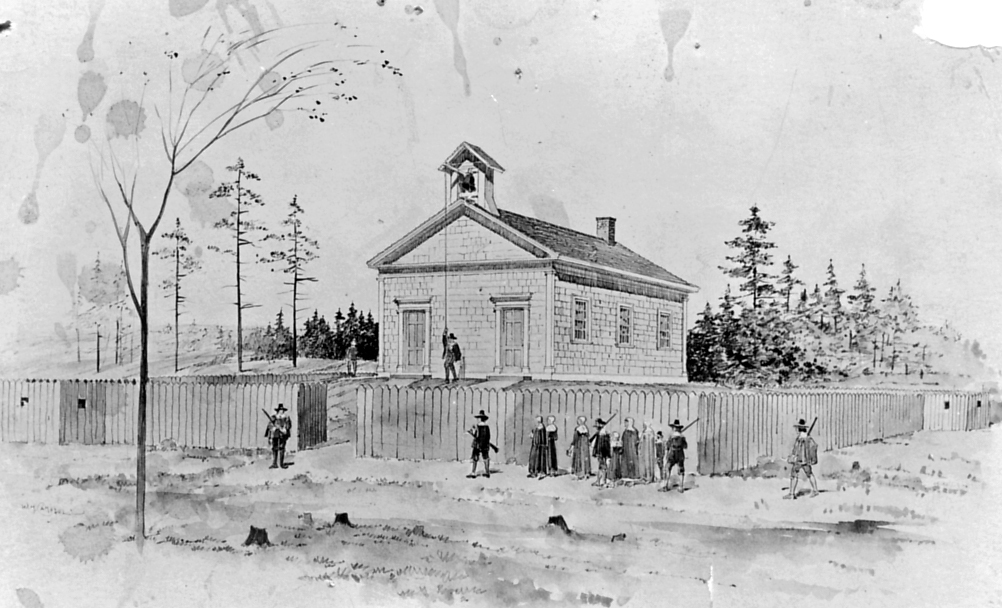
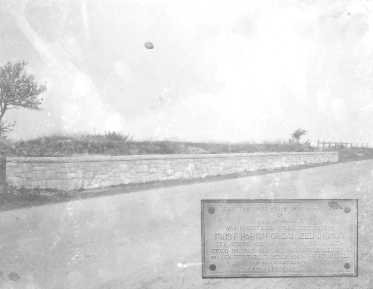
A third meetinghouse was built in 1710 at Pine Hill, the move reflecting the increased population at the Village of Cochecho. In 1758, the fourth meetinghouse was constructed at Tuttle Square and served for court sessions and town meetings as well as religious services until 1789 when the court house was built across the street, where the Mobil Station now sits. Though First Parish was incorporated from the town in 1762, it continued to be supported by taxation through 1828 when the mills and the influx of other religious denominations brought an end to the church/state union. The wooden meetinghouse at Tuttle Square was sold in 1829. Half the building still exists as a private home on Court Street. In place of the Wooden structure, a brick building was erected, finished in 1829, and is the church we see today. Distinguished among those who have served the parish is the Reverend Jeremy Belknap who was minister from 1769-1786. He is the author of the landmark “History of New Hampshire”. An ardent revolutionary, Belknap was present with the troops in Cambridge shortly after the Battle of Lexington in April 1775. He was a friend of Benjamin Franklin, George Washington, and many other patriots. He corresponded with them and Benjamin Franklin said of him that there were few men who did more to further the cause of the American Revolution. The rear portion of the church structure sits on property which was the former site of the Belknap School. It is recorded that the founders of the Episcopal Church met at the school prior to the building of their church in 1840.
From the 1997 Heritage Walking Tour booklet

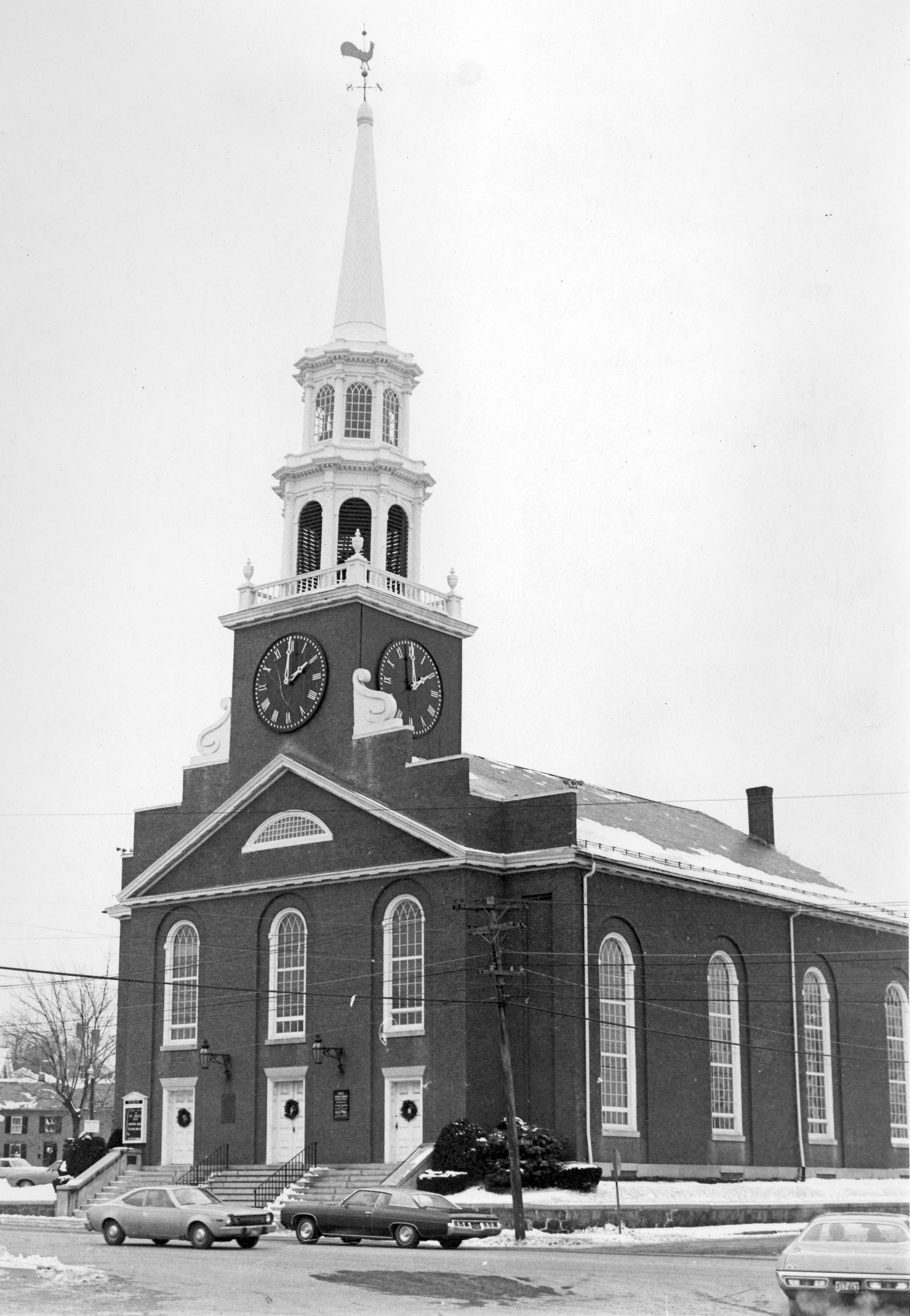

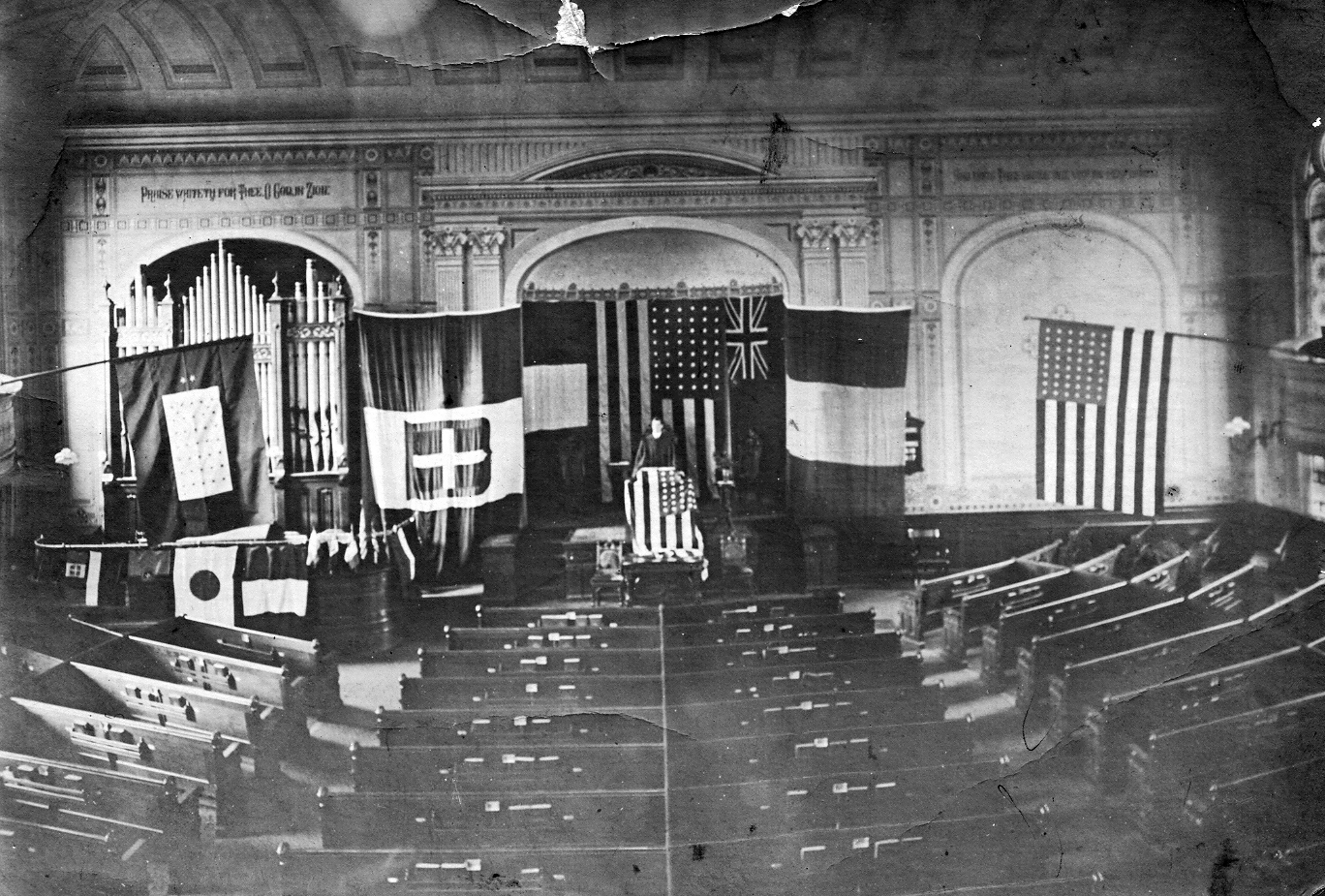
The Church was designed by George Pendexter and Samuel Drew who took the best designs of the day and incorporated them into the meetinghouse. The original steeple clock, installed in 1835, was made by Benjamin Morril of Boscawen, one of New Hampshire’s finest makers. It ran well for a number of years but finally stopped for good. The neighborhood had become so accustomed to it that they started a drive for a new clock, a Howard, which has run ever since. It is now electrified. To top off the steeple, a five foot rooster weathervane was installed soon after the church was built. It is gilded copper and was made by William Gerrish of Dover. A rooster was a favorite for early churches since it symbolized the rooster that crowed in the early morning hours when Peter denied ever having known his Lord and Master.
From the 1980 Heritage Walking Tour booklet
This historical essay is provided free to all readers as an educational service. It may not be reproduced on any website, list, bulletin board, or in print without the permission of the Dover Public Library. Links to the Dover Public Library homepage or a specific article's URL are permissible.
